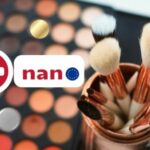
Inventory of consumer products containing nanos

Tracking of consumer products containing nanos
By the AVICENN team – Last updated November 2022
How do we know if the products we buy contain nanomaterials? They are present in all types of everyday objects: cosmetics, clothing, household appliances, sports equipment, glass and building materials, food, cars, etc.
While waiting for the labeling of nanomaterials in cosmetics, biocides and food to be fully effective, consumers can turn to the few existing inventories. Far from being exhaustive, and of limited reliability, they are nevertheless the only tools on which to rely for the moment.
This very unsatisfactory situation is not inevitable. The work in progress to improve the r-nano register should remedy this – and AVICENN will follow it closely.
Publicly available inventories
At the international level
The Nanotechnology Products Database (NPD), created in 2015, references nearly 10,000 products in 2022.
At the European level
A report by the European Observatory for Nanomaterials (EUON) published in 2022 estimates that there are 2,200 products containing nanomaterials on the European market1Cf. Study of the EU market for nanomaterials, including substances, uses, volumes and key operators, EUON, 2022.
The European platform NanoData platform contains, in June 2022, 997 products containing nanos.
In Denmark, the Danish Nanodatabase, is the most comprehensive and up-to-date inventory of nanoproducts marketed in Europe2It was put online in April 2012 by the Danish Consumer Council, the Danish Ecological Council and the Technical University of Denmark (which has maintained it ever since)… An English language version is available at http://nanodb.dk. This inventory had passed the 5000 mark of products containing manufactured nanomaterials available for sale in Europe at the end of 2020, in stores or on the Internet. The Danish Nanodatabase is currently the most extensive inventory on the European market3It is possible to notify the authors of this inventory of any product found to add it, by going to the following page: http: //nanodb.dk/en/report-product/. An analysis of the registry was published in late 2020 in Nature Nanotechnology: Advances and challenges towards consumerization of nanomaterials, by Steffen Foss Hansen and co-authors from the Technical University of Denmark.
– At the European level
- A 2010 inventory conducted jointly by BEUC European Consumers’ Organisation and ANEC listed 475 consumer products reported to contain nanomaterials present on the European market in 2010, with the majority being health and fitness products. More information here.
- The inventory “Nanomaterials in consumer products: Update of products on the European market in 2010” by the National Institute of Public Health and the Environment (RIVM), commissioned by the Dutch Food and Consumer Product Safety Authority (VWA) and published in 2011, had 858 products in 2010. The fastest growing product categories were personal care and cosmetics.
– At the Member State level
- In Germany: the database made by the NGO Friends of the Earth identified, in 2020, about 200 consumer products containing nanomaterials on the German market and the NGO invites German consumers to help complete the list.
- In Switzerland, a distributor published in April 2010 a “list of nanoproducts” on sale in its stores, on the initiative of the Community of interest of the Swiss retail trade (CICDS)4A Code of Conduct has been adopted by the major Swiss retailers in the field of nano in which they commit themselves to request information from their manufacturers and suppliers concerning the specific or supposed effect of the products, their composition and possible risks, and to inform the consumers in a transparent way..
Inventory of products containing nanomaterials by application sector
- In 2012, the Danish Nanodatabase went online; In March, it listed 120 food products in Denmark.
- In 2012, the collaborative database Open Food Facts listed the ingredients of many food products available on the French market, including additives that may contain nanoparticles (E171, E551, …).
- In October 2015, the NGO Center for Food Safety posted an inventory of approximately 300 food products containing nanomaterials in the US, updated in early 2018.
- In March 2017, the association Agir pour l’Environnement (APE) launched the website https://infonano.agirpourlenvironnement.org/additif-e171/categorie-alimentation/, a database listing more than 200 food products suspected of containing nanoparticles (less than 50 by 2022).
Inventories exist, but they are currently not sufficiently precise and reliable… or inaccessible to the general public.
- The first version of the “catalog” of nanomaterials used in cosmetic products placed on the market in the European Union, posted online mid-June 2017 by the European Commission, does not provide specific product or brand names but only the categories of products in which nano substances are found. At the end of 2019, a second version of the European catalog was published, with a reduced number of nanomaterials compared to the first version of the catalog.
- At the beginning of 2018, the DGCCRF indicated that it was able to identify, thanks to the “Cosmetic Products Notification Portal” (CPNP) of the European Commission, around 250 persons based in France that have declared, at EU level, the use of at least one nanomaterial; more than 11,000 product references are involved, but not publicly available today.
- In 2019, the association Agir pour l’Environnement (APE) launched the site https://dentifrice-infoconso.agirpourlenvironnement.org, a database listing, initially 271 toothpastes suspected of containing nanoparticles of titanium dioxide. By the end of 2021, the number had dropped to 224, so nearly 50 fewer toothpastes.
- Several other “guides” or “applications” have been made by NGOs or brands to identify nanos in cosmetics or, conversely, to find “nano-free” cosmetics, but their reliability is limited, either because they rely on the (sometimes misleading) statements of manufacturers or because they are too old:
- Friends of the Earth Australia’s Safe Sunscreen Guide summer 2010-2011, December 2010
- The “Skin Deep Cosmetic Safety database” and the Sunscreen Guide created by the American NGO Environmental Working Group (EWG)
- The app Clean Beauty, from the brand Officinea, deciphers the composition of cosmetics and identifies nanomaterials.
The legislation does not yet force producers and distributors to label the presence of nanomaterials in their products, as is the case for in cosmetics, biocides and food.
The R-nano register does not allow precise identification of the categories of products concerned (or the references of these products).
Nanomaterials do not (or very rarely) appear either in the Environmental and Sanitary Declaration Sheets (ESDS) or the Safety Data Sheets (SDS).
It is therefore necessary to cross-reference sources5A few documents can help you, including:
– the European NanoData platform (132 nano products in the construction sector in June 2022)
– Nano Pigments Inventory, ECHA, 2018: more than 80 nano-sized pigments identified on the European market
– The nanoshop.com website allows to find nanomaterials used in construction (glass, metal, …).
– At the beginning of 2016, there were 19 products in the “sealing nanotechnologies” category of the Italian website http://www.ediliziafaidate.it/fr/22-nanotechnologies-d-etancheite
– Elcosh NANO – Construction Nanomaterial Inventory, interview manufacturers and suppliers but with no guarantee of being able to identify nanomaterials in finished products – except through laboratory testing.
Inventories by substance
- Danish NanoDatabase lists more than 500 products containing nano silver in 2018.
- Nanosilver in Food and Food Contact Products is a list of approximately 60 food products (including packaging) containing nano-silver listed by the Center for Food Safety and published in December 2014.
- 563 articles containing nano-silver at the beginning of 2012 and 80 articles integrating colloidal silver for therapeutic purposes were counted by Manon Berge for her master’s thesis in sociology at the University of Quebec in Montreal entitled “The development of nanosilver; between hygienic representations, techno-scientific determinism and the market: a sociological analysis”.
- BEUC and ANEC jointly identified 109 products containing nanosilver in Europe in 20126see their report Nano – Very small and everywhere, A technological magic silver bullet or a serious safety risk? and the database updated to February 28, 2013.
- Pages 20-22 of the Friends of the Earth Australia report, Nanosilver: policy failure puts public health at risk, list products containing nanosilver in 2011.
- The annex of the American petition addressed in 2008 by the NGO ICTA to the EPA for the classification of nanosilver as a pesticide contains nearly 260 products including nanosilver sold to United States and from the United States, United Kingdom, Canada, Korea, Japan, Taiwan, China, New Zealand, and Germany
- Another commercial source: http://www.ec21.com, reports nearly 461 products from more than 235 companies as of February 2012, for nano products claiming to contain silver nanoparticles (up from 526 products for more than 264 companies in 2009).
Limitations of existing inventories
Most of these inventories are based on declarations by manufacturers or on assumptions about the composition of products, often without any verification, due to a lack of financial, human and/or technical resources.
In addition, they are very heavy to maintain… and in fact, most of them have not been updated for several years… or no longer online.
The difficulty in obtaining reliable information on the presence of nanos in products explains why the apps “Yuka” or “Quel produit?” (from Que Choisir) do not allow you to search for products with or without nanos.
Other indirect ways to identify nanoproducts
In the absence of a reliable and adapted inventories, cross-referencing different sources
In France:
- In June 2014, INRS published an Aide au repérage des nanomatériaux en entreprise, ED 6174.
- https://nanowerk.com/nanocatalog/ lists (as of April 2018) 3548 nanomaterials and 123 pieces of equipment for laboratories and manufacturing but only 4 of them are located in France… including one producer of aluminum powder.
- The “Nanotechnology Zone” group on LinkedIn has launched a call to suppliers, producers and distributors of nanomaterials to list their products online here (registration required but free).
- In 2011, a French team (ESIEE IFRIS LATTS) produced various tools with interactive mapping to track the relationships between research locations and technological applications at the global level.
- The Corporate Invention Board provides access to firms involved in nanotechnology.
- In 2016, the Besançon CCI organized the Micronora trade show dedicated to micro and nanotechnology, with a list of “nanos” exhibitors.
In Germany:
- The German Ministry of Education and Research has developed a map of some 2000 producers, users and research laboratories handling nanoparticles.
- In 2017 an international merchant site appeared in Germany: nanobay. It lists 1611 products as of June 2018.
In England:
- the IOP, Institute of Physics https://www.iop.org publishes a commercial site listing many products and industries: https://nanotechweb.org/cws/buyers-guide.
- The site plasticstoday. com provides information on applications in plastics, packaging (see also the words “thinfilm” and “smart”).
- A selection of textile companies concerned by nanoparticles: https://innovationintextiles.com.
In Spain:
- In 2011, a catalog of nanomaterial producers was published online in 2011 by phantomsnet and revised in 2013; newsletters explore various fields.
In India:
- The Centre for Knowledge Management of Nanoscience & Technology lists some recent nanoproducts developed in the United States and Switzerland: https://www.ckmnt.com/some-new-nanoproducts.html
In China
- The e-commerce website of Chinese origin alibaba, in its French version, lists products labeled nano (which includes accessories for Ipod nano…) with 218 manufacturers & suppliers; its other site “https://fr.aliexpress.com” also allows for the identification of products presented as containing nanomaterials or derived from processes using nanotechnologies.
In the USA
- The Nanotechnology Consumer Products Inventory, started in 2006 (no longer updated since late 2014).
- understandingnano, created between 2007 and 2014…) publishes directories of products and manufacturers, by topic but there is no update date.
- A 2019 market research report on the uses of nanos in aeronautics in the United States and the global market. The report provides information on the manufacturers.
- AnCatt produces anti-corrosion paints (aircraft, marine and automotive uses), including AnCatt Miracle iBarrier ™ with Conductive Polymer Nano Dispersion (CPND) said to be a “non-toxic, environmentally friendly product that outperforms zinc-based coatings by six times in longevity”. This could be an alternative to zinc…
- Applied Thin Films
- FlightShield offers paints and varnishes for aircraft and automobiles
- Glonatech uses carbon nanotubes and displays its distribution network in Europe
- Triple (?)
- CHOOSE NanoTech is focused on industrial (aircraft, automotive) and consumer products, and also has a distribution network in Europe.
- General Nano: the products are clearly named “nano”.
- HR ToughGuard: Surface coating products are used in the following areas: Aviation, Automotive, Land and sea transportation, wind turbines and solar panels
- Surfactis Technologies is a French company that manufactures surface modification products, oleophobic and hydrophobic, including anti graffiti
- Tesla NanoCoatings manufactures anti-corrosion products containing carbon nanotubes combined with zinc.
Use the inventories of patents filed on nanos
- Searching for patents filed on nanos is possible here on www.google.fr/patents, but it does not indicate the use of these patents nor where they are sold.
- Statnano.com: this site launched in 2010 with the support of the Iran Nanotechnology Initiative Council (INC) offers a remarkable inventory. It lists in 2020 more than 8900 products from 284 firms in 62 countries: from patents of the European Patent Office (EPO) and the United States Patent and Trademark Office (USPTO). In addition, these two organizations launched a cooperative global patent document classification system (CPC) in January 2013, effective November 2016: https://www.cooperativepatentclassification.org
More information to come ?
The situation could gradually improve…
… thanks to nano registers
France is the first country to have a register of nanomaterials marketed on its territory. Long awaited by many stakeholders, the “annual declaration of substances in the nanoparticulate state” has made it possible to implement an R-nano register but the data collected is not accessible to the public for the moment: it remains confidential, in the name of industrial or commercial secrecy, and only summaries that are not very usable are published. Fortunately, the French r-nano register will be improved and it has started to spread to other European countries. A European-wide harmonization of various national initiatives taken or envisaged by the Member States is strongly encouraged by civil society. A European register of nanoproducts would indeed allow for better visibility, but this perspective has not yet been retained by the European Commission, despite the fact that the registration of nanomaterials in REACH is struggling to make headway… In the long run, however, such a register would be a very powerful tool.
… thanks to European regulations making the labeling of nanomaterials mandatory in certain sectors
These labeling obligations, which are only valid for cosmetics, biocides and food, are very rarely implemented by companies. The information made available to the public is therefore very limited…
Any questions or comments? This information sheet compiled by AVICENN is intended to be completed and updated. Please feel free to contribute.
Our information sheets to go further
Upcoming Nano Agenda
- Awareness-raising aimed at personnel in contact with nanomaterials during research, formulation, production, maintenance, cleaning, upkeep, etc., as well as safety coordinators or engineers, facility managers, heads of laboratories where nanoparticles are handled.
- Organizers: INSTN Grenoble (CEA)
- On the agenda: potential impact on health; metrology and protection; control of potential risks associated with nanomaterials; consideration of societal aspects.
- Website: https://instn.cea.fr/formation/maitrise-des-risques-lies-aux-nanomateriaux-sensibilisation
- Awareness-raising aimed at personnel in contact with nanomaterials during research, formulation, production, maintenance, cleaning, upkeep, etc., as well as safety coordinators or engineers, facility managers, heads of laboratories where nanoparticles are handled.
- Organizers: INSTN Grenoble (CEA)
- On the agenda: potential impact on health; metrology and protection; control of potential risks associated with nanomaterials; consideration of societal aspects.
- Website: https://instn.cea.fr/formation/maitrise-des-risques-lies-aux-nanomateriaux-sensibilisation
- 16th meeting of the “nano and health” dialogue committee
- Organizer: ANSES
This sheet was originally created in February 2019
Notes and references
- 1
- 2It was put online in April 2012 by the Danish Consumer Council, the Danish Ecological Council and the Technical University of Denmark (which has maintained it ever since)
- 3It is possible to notify the authors of this inventory of any product found to add it, by going to the following page: http: //nanodb.dk/en/report-product/. An analysis of the registry was published in late 2020 in Nature Nanotechnology: Advances and challenges towards consumerization of nanomaterials, by Steffen Foss Hansen and co-authors from the Technical University of Denmark
- 4A Code of Conduct has been adopted by the major Swiss retailers in the field of nano in which they commit themselves to request information from their manufacturers and suppliers concerning the specific or supposed effect of the products, their composition and possible risks, and to inform the consumers in a transparent way.
- 5A few documents can help you, including:
– the European NanoData platform (132 nano products in the construction sector in June 2022)
– Nano Pigments Inventory, ECHA, 2018: more than 80 nano-sized pigments identified on the European market
– The nanoshop.com website allows to find nanomaterials used in construction (glass, metal, …).
– At the beginning of 2016, there were 19 products in the “sealing nanotechnologies” category of the Italian website http://www.ediliziafaidate.it/fr/22-nanotechnologies-d-etancheite
– Elcosh NANO – Construction Nanomaterial Inventory - 6see their report Nano – Very small and everywhere, A technological magic silver bullet or a serious safety risk? and the database updated to February 28, 2013



